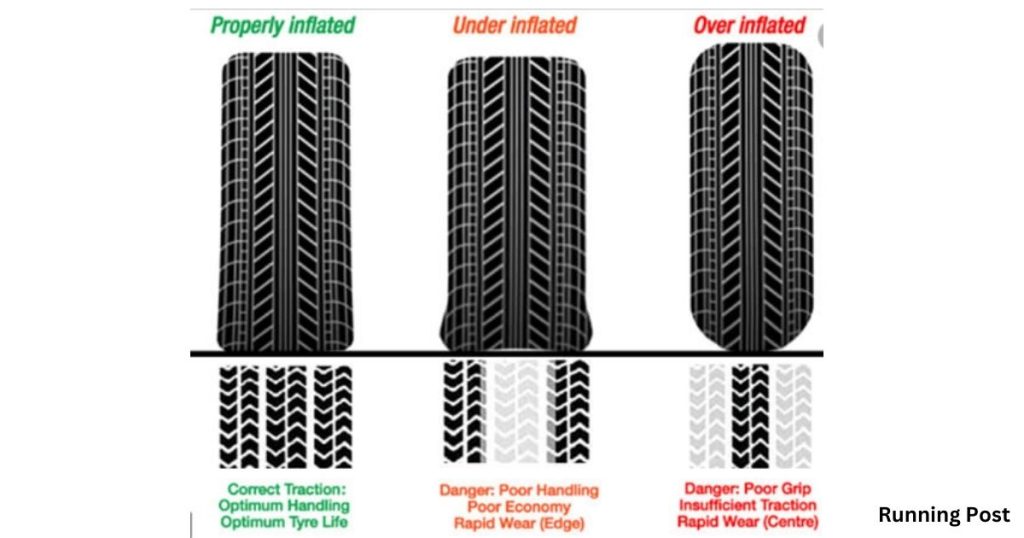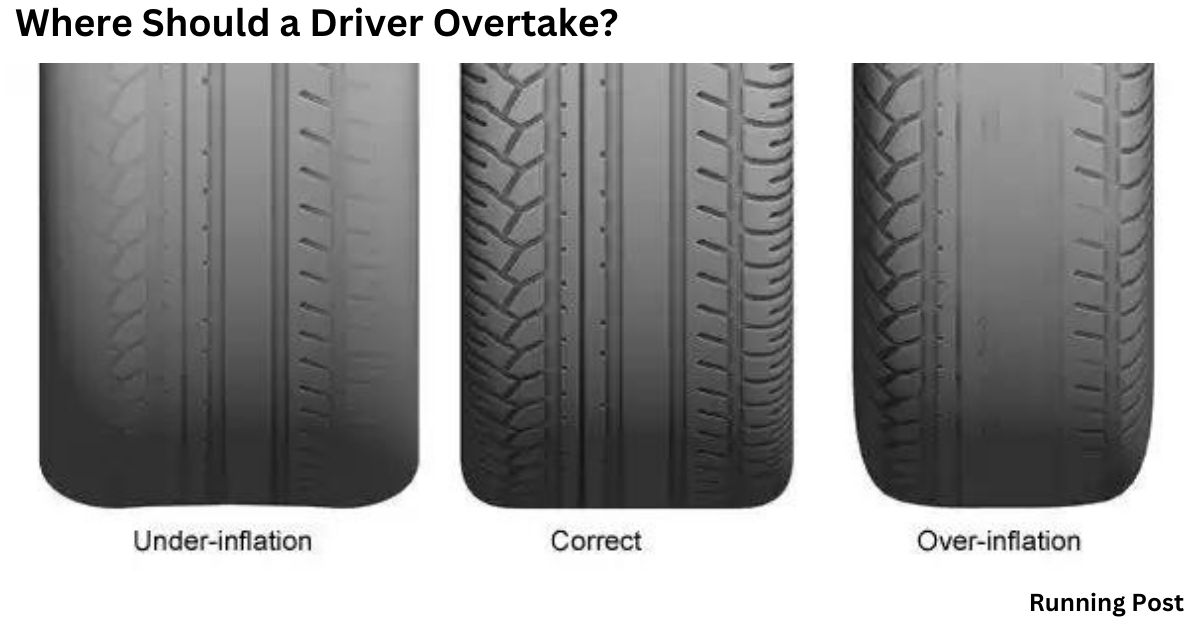| A: The vehicle’s stopping distance would increase | B: Under-inflated tyres improve fuel efficiency | C: The vehicle’s headlights would aim high | D: Under-inflated tyres enhance vehicle handling and stability |
Introduction
Importance of Tyre Maintenance
Tyre maintenance is crucial for ensuring the safety, performance, and efficiency of your vehicle. Properly maintained tyres enhance driving stability, improve fuel efficiency, and contribute to overall road safety. Regular checks and maintenance help prevent issues such as blowouts, poor handling, and decreased fuel economy. Tyres are the only contact your vehicle has with the road, making their condition a fundamental aspect of vehicle safety.
- Safety: Well-maintained tyres prevent accidents caused by blowouts or poor grip.
- Performance: Proper inflation ensures better handling and control.
- Efficiency: Correct tyre pressure improves fuel economy.
- Longevity: Regular maintenance extends the lifespan of your tyres.
Neglecting tyre maintenance can lead to several problems, including under-inflation, which significantly impacts vehicle performance. Understanding the importance of maintaining correct tyre pressure is essential for every driver. Not only does it affect your safety on the road, but it also influences the lifespan of your tyres and the efficiency of your vehicle. Regularly checking tyre pressure and ensuring they are properly inflated can save you from costly repairs and potential accidents.
- Cost Savings: Avoid costly repairs and replacements with proper maintenance.
- Safety: Ensure optimal performance and avoid dangerous situations.
- Vehicle Efficiency: Maximize fuel efficiency and tyre lifespan.
Overview of Tyre Inflation and Vehicle Performance
Tyre inflation plays a critical role in vehicle performance. Properly inflated tyres ensure optimal contact with the road, leading to better traction, handling, and fuel efficiency. When tyres are inflated to the recommended pressure, they provide a smoother ride and more predictable vehicle behavior. On the other hand, under-inflated tyres can cause a host of issues, including increased stopping distances, reduced control, and poorer fuel economy.
- Traction: Proper inflation ensures maximum grip on the road.
- Handling: Well-inflated tyres provide better vehicle control.
- Fuel Efficiency: Correct pressure reduces rolling resistance and improves fuel economy.
Understanding how tyre pressure affects your vehicle’s performance helps you maintain your tyres correctly and avoid potential problems. Tyre pressure is typically measured in pounds per square inch (PSI) and can vary based on the vehicle’s make and model. Regularly checking and adjusting tyre pressure according to the manufacturer’s specifications is a simple yet effective way to ensure your vehicle operates at its best.
- Measurement: Tyre pressure is measured in PSI.
- Specifications: Follow manufacturer recommendations for optimal performance.
- Routine Checks: Regularly inspect and adjust tyre pressure as needed.
Effects of Under-Inflated Tyres on a Vehicle

Increased Stopping Distance
One of the most significant effects of under-inflated tyres is an increased stopping distance. When tyres are not adequately inflated, their contact with the road is compromised, leading to less effective braking. Under-inflation causes the tyre to flex more, which results in more heat buildup and a longer distance required to bring the vehicle to a stop. This extended stopping distance can be particularly dangerous in emergency situations where quick reactions are necessary.
- Compromised Contact: Under-inflated tyres have less grip on the road.
- Longer Stopping Distance: Increased distance required to stop the vehicle.
- Heat Buildup: Excessive flexing generates more heat, reducing braking efficiency.
How Under-Inflation Impacts Braking Efficiency
Under-inflated tyres affect braking efficiency by reducing the tyre’s ability to maintain a firm grip on the road. The increased rolling resistance and additional flexing of the tyre surface reduce the effectiveness of the braking system. As a result, the vehicle may not stop as quickly as it would with properly inflated tyres. This reduction in braking efficiency can lead to longer stopping distances and a higher risk of accidents.
- Reduced Grip: Less effective braking due to poor road contact.
- Increased Rolling Resistance: More effort required to stop the vehicle.
- Higher Accident Risk: Longer stopping distances increase the likelihood of collisions.
Theoretical Impact of Under-Inflated Tyres
Tire Pressure and Vehicle Dynamics
Tyre pressure plays a vital role in vehicle dynamics. Properly inflated tyres ensure balanced handling and stability. When tyres are under-inflated, the vehicle’s balance is affected, leading to poor handling and increased wear on suspension components. Tyre pressure impacts how weight is distributed across the tyres and how the vehicle responds to steering inputs.
- Balance and Stability: Proper inflation maintains vehicle balance.
- Handling: Under-inflation leads to poor handling and response.
- Suspension Wear: Affects the lifespan of suspension components.
The Role of Tyre Pressure in Vehicle Safety
Tyre pressure is critical for vehicle safety. Correct pressure ensures that the tyres are capable of supporting the vehicle’s weight and providing optimal traction. Under-inflated tyres compromise safety by increasing the risk of blowouts and reducing control during sudden maneuvers or adverse conditions.
- Traction: Proper pressure provides optimal grip and stability.
- Blowout Risk: Low pressure increases the likelihood of tyre blowouts.
- Control: Ensures better control during emergency situations.
Effects on Vehicle Suspension
How Low Tyre Pressure Affects Suspension Components
Low tyre pressure can negatively impact vehicle suspension components. Under-inflated tyres cause increased stress on the suspension system as it compensates for the lack of proper tyre support. Over time, this extra strain can lead to premature wear and damage to suspension parts, affecting overall vehicle performance and comfort.
- Increased Stress: Extra load on suspension components.
- Premature Wear: Accelerates wear and tear on suspension parts.
- Performance Impact: Affects vehicle comfort and handling.
You Also Like It:
Why are these yellow lines painted across the road?
how should you use the lanes on a motorway?
What does it mean when there are double red lines running along the edge of a road?
What Happens When You Under-Inflate Your Tires?
Immediate Consequences
Immediate consequences of under-inflated tyres include decreased performance and safety risks. Drivers may notice a drop in handling and a decrease in ride comfort. Visual signs such as a sagging tyre or uneven wear patterns can indicate that tyres are under-inflated. Addressing these issues promptly can prevent more severe problems.
- Decreased Performance: Poor handling and ride comfort.
- Visual Signs: Sagging or uneven tyre wear.
- Safety Risks: Increased chance of accidents and breakdowns.
Long-Term Effects
Long-term effects of under-inflated tyres include accelerated tyre wear and potential for significant damage. Continually driving on under-inflated tyres can cause them to wear unevenly, leading to reduced lifespan and the need for early replacement. Additionally, prolonged under-inflation can result in more serious issues such as tyre blowouts or structural damage.
- Accelerated Wear: Uneven tyre wear reduces tyre lifespan.
- Early Replacement: Increased frequency of tyre replacements.
- Structural Damage: Risk of blowouts and significant tyre damage.
How Low Tyre Pressure Affects Your Vehicle
Safety Risks
Low tyre pressure poses several safety risks. Under-inflated tyres are more prone to blowouts, which can lead to loss of control and accidents. Additionally, reduced grip on the road increases the risk of skidding, particularly in adverse weather conditions. Ensuring correct tyre pressure is essential for maintaining vehicle safety.
- Blowouts: Higher risk of sudden tyre blowouts.
- Loss of Control: Increased likelihood of losing control.
- Skidding: Poor grip leads to skidding in wet or icy conditions.
Financial Implications
Low tyre pressure can lead to financial implications through increased fuel consumption and more frequent tyre replacements. Under-inflated tyres create higher rolling resistance, which results in greater fuel use. Additionally, the need for early tyre replacement due to accelerated wear adds to the cost.
- Increased Fuel Costs: Higher fuel consumption due to poor efficiency.
- Frequent Replacements: More frequent tyre replacements increase costs.
- Overall Expenses: Additional expenses from maintenance and repairs.
Conclusion About How would under-inflated tyres affect your vehicle?
Summary of Key Points
In summary, under-inflated tyres have significant negative effects on vehicle performance and safety. They increase stopping distances, reduce handling, and decrease fuel efficiency. Understanding the theoretical impacts and immediate and long-term consequences of under-inflation helps drivers appreciate the importance of regular tyre maintenance.
- Performance Impact: Decreased handling and increased stopping distances.
- Safety Concerns: Higher risk of blowouts and accidents.
- Financial Costs: Increased fuel consumption and early tyre replacements.
Recommendations for Proper Tyre Maintenance
To ensure optimal vehicle performance and safety, regularly check and maintain tyre pressure. Follow the manufacturer’s recommendations for tyre inflation and inspect tyres for signs of wear or damage. Proper tyre care not only enhances safety but also improves fuel efficiency and extends the lifespan of your tyres.
- Regular Checks: Inspect tyre pressure regularly.
- Manufacturer Guidelines: Adhere to recommended inflation levels.
- Routine Maintenance: Address any signs of wear or damage promptly.
FAQs About How would under-inflated tyres affect your vehicle?
What is an under-inflated tyre?
An under-inflated tyre is one that has less air pressure than the manufacturer’s recommended level. This often results in the tyre being softer and more flexible than intended, which affects vehicle performance and safety.
- Definition: Tyre with less air pressure than recommended.
- Characteristics: Softer and more flexible.
- Implications: Affects performance and safety.
How can I check if my tyres are under-inflated?
You can check if your tyres are under-inflated using a tyre pressure gauge. Measure the pressure when the tyres are cold (before driving). Compare the reading to the manufacturer’s recommended pressure, usually found on a sticker inside the driver’s door or in the vehicle’s manual.
- Use a Tyre Pressure Gauge: Measure pressure accurately.
- Check When Cold: Perform the check before driving.
- Compare to Recommendations: Use the manufacturer’s specified pressure.
What are the signs of under-inflated tyres?
Signs of under-inflated tyres include visible sagging or bulging, uneven tyre wear, and poor handling. You may also experience a decrease in fuel efficiency and a rougher ride.
- Visible Sagging or Bulging: Check for noticeable changes in shape.
- Uneven Wear: Inspect for irregular wear patterns.
- Decreased Fuel Efficiency: Notice a drop in miles per gallon (MPG).
How does under-inflation affect fuel efficiency?
Under-inflated tyres increase rolling resistance, which forces the engine to work harder and consume more fuel. This can lead to reduced fuel efficiency and higher running costs.
- Increased Rolling Resistance: Harder for the vehicle to move.
- Higher Fuel Consumption: More fuel used to maintain speed.
- Reduced MPG: Decreased miles per gallon efficiency.
How often should I check my tyre pressure?
It’s recommended to check your tyre pressure at least once a month and before long trips. Additionally, inspect the pressure if you notice any changes in vehicle performance or if the tyres look visibly low.
- Monthly Checks: Perform regular inspections.
- Before Long Trips: Ensure tyres are properly inflated for safety.
- After Noticing Changes: Check if performance or appearance changes.
What should I do if I find my tyres are under-inflated?
If you find that your tyres are under-inflated, inflate them to the recommended pressure as soon as possible. If the tyres are damaged or if you notice frequent under-inflation, consult a professional for a thorough inspection and potential repairs or replacements.
- Inflate to Recommended Pressure: Use an air pump to adjust.
- Inspect for Damage: Look for visible issues or wear.
- Consult a Professional: Seek expert advice if problems persist.
Can under-inflated tyres cause tyre blowouts?
Yes, under-inflated tyres are more prone to blowouts. The increased flexing and heat buildup from driving on under-inflated tyres can weaken the tyre structure, leading to a higher risk of sudden failures.
- Increased Flexing: Causes additional stress on the tyre.
- Heat Buildup: Excessive heat can damage the tyre.
- Higher Risk of Blowouts: Increased likelihood of sudden failures.
How does under-inflation affect vehicle handling?
Under-inflated tyres can negatively impact vehicle handling by reducing grip and increasing rolling resistance. This leads to less responsive steering, poor cornering ability, and decreased overall vehicle control.
- Reduced Grip: Less contact with the road surface.
- Increased Rolling Resistance: More effort needed for movement.
- Poor Steering Response: Less precise control of the vehicle.
You Also Like It:
What’s a Statutory Off-Road Notification (SORN)?
How can you identify traffic signs that give orders?
What’s the speed limit for a car towing a small caravan along a dual carriageway?
Releated Posts
MAB Instructor Certification: Your Gateway to Professional Crisis Management Leadership
In today’s fast-evolving professional environments—especially in healthcare, mental health, education, and corrections—conflict and aggression can arise without warning.…
Freewayget.com: Your Ultimate Platform for Deals, Discounts, and Digital Products
Introduction to Freewayget.com In today’s fast-paced digital world, finding reliable platforms that offer authentic discounts, deals, and digital…
Affordable & Fast Embroidery Digitizing Services in Your Area
Embroidery digitizing services provide corporations, designers, and people with brilliant embroidery-equipped designs by means of changing art work…
Introduction to hdhub4u nit
In this article, we will delve into the details of hdhub4u nit, exploring its features, benefits, and why…

















